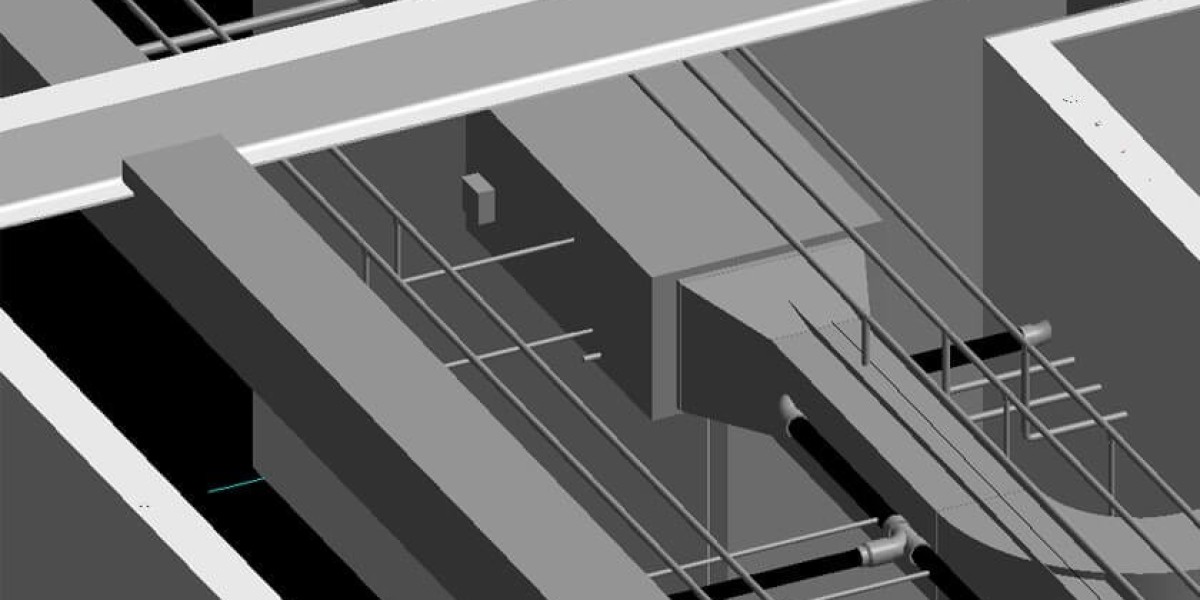When it comes to architectural and construction projects, precision is everything. Any oversight in design coordination can lead to delays, cost overruns, and complex on-site issues. This is where Architectural BIM Coordination comes into play, providing a streamlined process to ensure design accuracy and avoid costly mistakes.
Whether you're an architect or a construction manager, understanding the value of BIM (Building Information Modeling) Coordination can revolutionize the way you approach your projects. This blog will walk you through what BIM Coordination entails, its core benefits, the coordination process, and real-world examples showcasing its impact.
What is Architectural BIM Coordination?
Before we get into the details, let's break down the concept. Building Information Modeling (BIM) is a digital representation of a building's physical and functional characteristics. Think of it as a 3D model that integrates data from various disciplines, such as architecture, structural engineering, and MEP (mechanical, electrical, and plumbing) systems.
BIM Coordination, on the other hand, is the process of integrating and aligning all these disciplines to identify and resolve potential clashes or conflicts before construction begins. It ensures that the architectural design is perfectly synchronized with other systems, minimizing discrepancies and ensuring smooth execution.
Benefits of Architectural BIM Coordination Services
Investing in Architectural BIM coordination services offers several key benefits that directly impact a project's success:
1. Enhanced Design Accuracy
Architectural BIM Coordination promotes precision by integrating all aspects of a building's design within a single model. The coordination process makes it easier to identify inconsistencies or clashes between architectural, structural, and MEP designs, ensuring the final blueprint is both feasible and precise.
2. Reduced Errors and Rework
Errors discovered during construction can lead to significant delays and budget overruns. With BIM Coordination, potential issues are resolved during the design phase itself, drastically reducing costly changes and on-site rework.
3. Improved Collaboration
Collaboration is key to any successful construction project. BIM Coordination bridges communication gaps between architects, engineers, and other stakeholders by providing a shared digital model. This transparency fosters teamwork, reduces misunderstandings, and keeps everyone aligned with the project’s vision.
4. Time and Cost Efficiency
By detecting issues early and improving communication, BIM Coordination prevents last-minute changes that can delay the project timeline. With fewer errors and faster decision-making, both time and money are saved, contributing to overall efficiency.
5. Better Decision-Making
BIM models provide a wealth of data, from material specifications to energy usage estimates. This data empowers architects and construction managers to make informed decisions, whether it’s choosing sustainable materials or optimizing structural elements for cost efficiency.
The BIM Coordination Process
To fully appreciate the power of Architectural BIM Coordination services, let's break down the steps involved in the coordination process:
Step 1: Initial BIM Model Creation
Each discipline involved in the project (architecture, structure, MEP, etc.) creates its own BIM model. These models include detailed data specific to their scope, such as structural loads or ventilation requirements.
Step 2: Model Integration
Using BIM software like Autodesk Revit, Navisworks, or Tekla, these individual models are integrated into a unified, collaborative environment. This consolidated model provides a holistic view of the project, paving the way for detailed analysis.
Step 3: Clash Detection
This is one of the most critical steps in BIM Coordination. Automated tools analyze the integrated model and identify clashes, such as pipes intersecting with structural beams or HVAC systems misaligned with the architectural layout.
Step 4: Clash Resolution
Once clashes are identified, project stakeholders collaborate to resolve them. This often involves revising designs, redefining dimensions, or adjusting layouts to eliminate conflicts without compromising the integrity of the project.
Step 5: Model Validation
After resolving all identified issues, the updated BIM model undergoes a thorough validation process to ensure accuracy and compliance with project requirements.
Step 6: Ongoing Updates
BIM Coordination is an ongoing process. Even after initial validation, the model is continuously updated as designs evolve, ensuring consistency and alignment throughout the project lifecycle.
Real-World Examples of BIM Coordination Success
To see the true impact of Architectural BIM Coordination services, here are a couple of real-world examples:
Case Study 1: Skyscraper Design in New York
A 50-story skyscraper project in New York faced challenges integrating its complex mechanical and structural systems. With the help of BIM Coordination, over 500 clashes were identified and resolved during the design phase. This proactive approach saved the project an estimated $3 million in rework costs and reduced construction delays by three months.
Case Study 2: Large-Scale Hospital in London
A hospital in London required seamless integration of intricate MEP systems within its architectural framework. Through meticulous BIM Coordination, the design team ensured that every system fit perfectly within the available space. The result was a fully optimized design that improved building efficiency and reduced energy consumption by 20%.
Why Architects and Construction Managers Need BIM Coordination
Architects and construction managers today are tasked with delivering projects that are not only visually stunning but also structurally sound and cost-efficient. With its ability to optimize designs, prevent delays, and foster collaboration, architectural BIM services have become an essential tool for success in the industry.
Taking the time to invest in BIM Coordination upfront pays dividends in the long run, ensuring that your projects are both accurate and future-proof. Whether you’re designing a residential complex, a high-rise, or an industrial facility, BIM Coordination sets the foundation for success.






